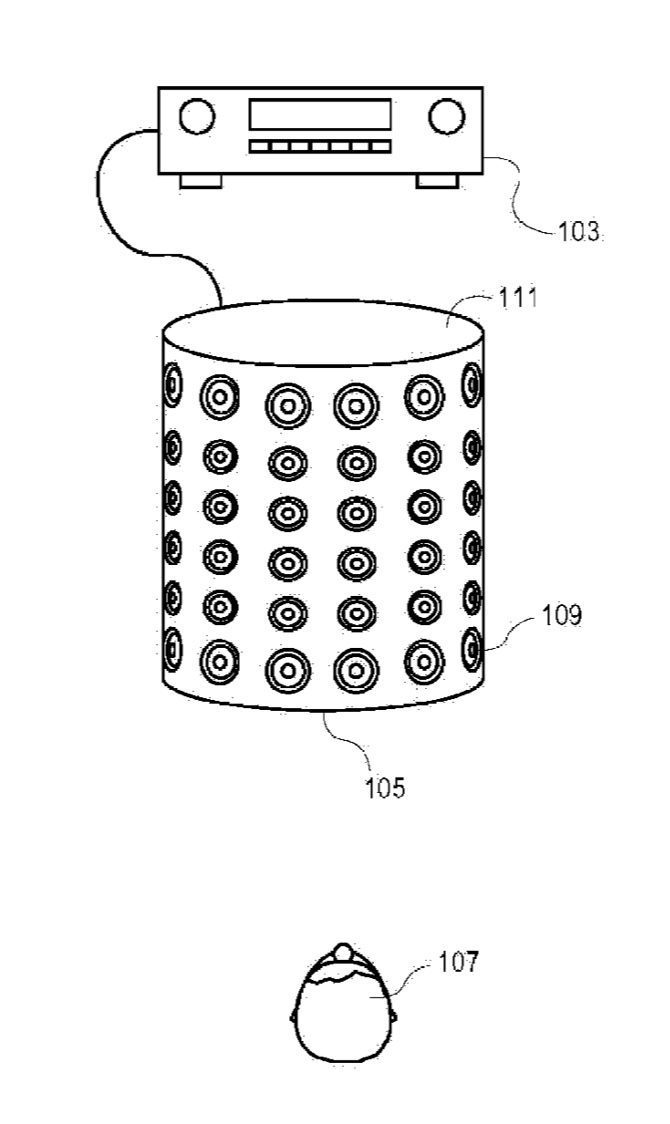Two newly granted Apple patents (numbers 20170238091and 20170238091) hint at features in future HomePods. The patents are for a “rotationally symmetric speaker array” that could sense when you’re in the room and adjust the audio accordingly.
Apple’s HomePod is expected to go on sale in December and cost $349. The device is just under seven inches tall and looks like a piece of furniture. It will be available in both space gray and white, and also acts as a hub for HomeKit devices to provide remote access to home automation.
In the patent filing, Apple notes that speaker arrays are often used by computers and home electronics for outputting sound into a listening area. Each speaker array may be composed of multiple transducers that are arranged on a single plane or surface of an associated cabinet or casing.

Since the transducers are arranged on a single surface, these speaker arrays must be manually oriented such that sound produced by each array is aimed at a particular target (e.g., a listener). For example, a speaker array may be initially oriented to directly face a listener. However, any movement of the speaker array and/or the listener may require manual adjustment of the array such that generated sound is again properly aimed at the target listener. This repeated adjustment and configuration may become time consuming and may provide a poor user experience, according to Apple.
The tech giant proposes a speaker system with rotational symmetry that allows the speaker array to be easily adapted to any placement within the listening area. In particular, since the speaker array is rotationally symmetric, the same number and type of transducers are pointed in each direction. Once the orientation of the speaker array is known, the speaker array may be driven according to this orientation to produce one or more channels of audio without the need for movement and/or physical adjustment of the speaker array.
Also, by utilizing multiple transducers with overlapping frequency ranges, the speaker array may avoid initial dips or shortfalls in directivity for corresponding beam patterns. In other words, the speaker would “instinctively” adjust audio for the best sound quality and listening experience.
Here’s a summary of the invention: “A multi-way speaker array is disclosed that includes rings of transducers of different types. The rings of transducers may encircle the cabinet of the speaker array such that the speaker array is rotationally symmetric. The distance between rings of transducers may be based on a logarithmic scale.
“By separating rings of transducers using logarithmic spacing, denser transducer spacing at short wavelengths is achieved while limiting the number of transducers needed for longer wavelengths by spacing them in larger and larger logarithmic increments. Transducers with overlapping frequency ranges may be used in the speaker array to avoid initial dips or shortfalls in directivity for corresponding beam patterns.”
Of course, Apple files for — and is granted — lots of patents by the U.S. Patent & Trademark Office. Many are for inventions that never see the light of day. However, you never can tell which ones will materialize in a real product.
